 |
 |
 |
| |
Does HCV or HBV co-infection influence saquinavir exposure in HIV-infected patients without liver function impairment?
|
| |
| |
Reported by Jules Levin
9th International Workshop on Clinical Pharmacology of HIV Therapy
April 7-9, 2008
New Orleans
J. Molto1, J.M. Llibre1, E. Ribera2, C. Mínguez3, J. Sanchez del Río4, E. Pedrol5, G. Valdecillo6, S. Cedeño7, M. Valle8, C. Miranda1, E. Negredo1, B. Clotet1,7
1Hospital Universitari Germans Trias i Pujol, "Lluita contra la Sida" Foundation, Badalona, Spain; 2Hospital de la Vall d'Hebron, Internal Medicine Department, Barcelona, Spain; 3Hospital General de Castellon, Internal Medicine Department, Castellon, Spain; 4Hospital General de Asturias, Internal Medicine Department, Oviedo, Spain; 5"Hospital-Asil de Granollers" Foundation, Internal Medicine Department, Granollers, Spain; 6Hospital del Mar, Internal Medicine Department, Barcelona, Spain; 7Hospital Universitari Germans Trias i Pujol, "IrsiCaixa" Foundation, Barcelona, Spain; 8Institut de Recerca de l'Hospital de la Santa Creu i Sant Pau, Centre d'Investigacio del Medicament, Barcelona, Spain
STUDY OBJECTIVE
To compare SQV and RTV exposure between patients with and without HCV-HBV co-infection.
To assess the influence of the extent of liver fibrosis in SQV and RTV exposure
.....in a population of non-cirrhotic HIV-infected patients.
AUTHOR CONCLUSION
SQV and RTV Ctrough were not increased in HIV-infected patients with HCV-HBV co-infection, independently of the extent of liver fibrosis, in absence of liver function impairment.
No SQV/rtv dose modification is necessary in HIV-HCV-HBV co-infected patients absence of liver cirrhosis/hepatic dysfunction.
ABSTRACT
Background: The objective of the present study was to assess the influence of viral hepatitis co-infection and the extent of liver fibrosis on saquinavir exposure in HIV-infected patients without liver function impairment.
Material & Methods: Multicenter, cross-sectional, comparative, open label study enrolling 174 HIV-infected adults receiving stable antiretroviral therapy containing saquinavir/ritonavir (1000/100 mg BID in 138 patients or 1500/100 mg QD in 36 patients). Chronic hepatitis (HEP+) was diagnosed in the presence of anti-HCV antibodies or HBV surface antigen. HIV/HEP+ patients were grouped as having significant liver fibrosis (HEP+/FIB+, n=21) or not (HEP+/FIB-, n=28) based on the FIB-4 index. Blood samples were collected before a saquinavir/ritonavir morning dose (Ctrough), and saquinavir concentrations in plasma were determined by high-performance liquid chromatography. Saquinavir concentrations were presented as geometric mean (coefficient of variation, CV%). The geometric mean ratio (GMR) and the 95% confidence interval (95% CI) was used to compare HEP+ and HEP- patients as well as patients with and without significant liver fibrosis. Comparisons were performed considering each saquinavir/ritonavir dose separately.
Results:
Ninety-five HEP+ and 79 HEP- patients were included. Both HEP+ and HEP- groups were comparable regarding sex, age or time on saquinavir.
Mean BMI was higher in HEP+ than in HEP- patients (23.8 vs 22.6, respectively; p=0.02).
Geometric mean saquinavir concentration in HEP- patients receiving saquinavir/ritonavir BID (n=67) was 324 ng/mL (CV 103%), compared with 284 ng/mL (CV 125%) in HEP+ patients (n=71; GMR 0.88, 95% CI 0.43-1.77; p=0.71).
Likewise, geometric median saquinavir concentration in HEP- patients on saquinavir/ritonavir QD (n=12) was 105 ng/mL (CV 184%), compared with 174 ng/mL (CV 159%) in HEP+ patients (n=24; GMR 1.65, 95% CI 0.51-5.37; p=0.96).
Saquinavir exposure was not influenced by the presence of significant liver fibrosis.
Conclusion: Saquinavir exposure was not affected by the presence of viral hepatitis co-infection or by the extent of liver fibrosis in HIV-infected patients without liver function impairment. Interindividual variability in saquinavir concentrations was high, particularly in patients receiving saquinavir/ritonavir 1500/100 mg QD, suggesting a potential role for therapeutic drug monitoring in this scenario.
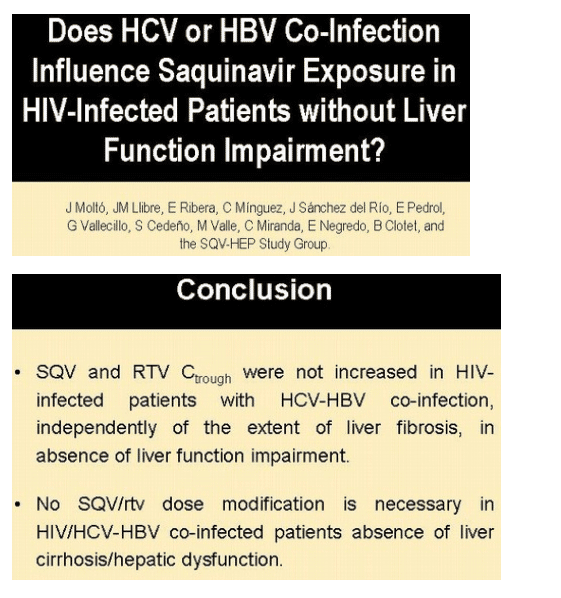
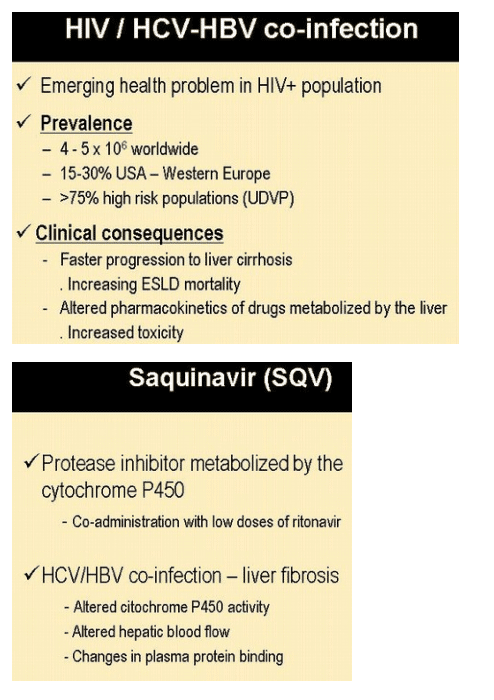
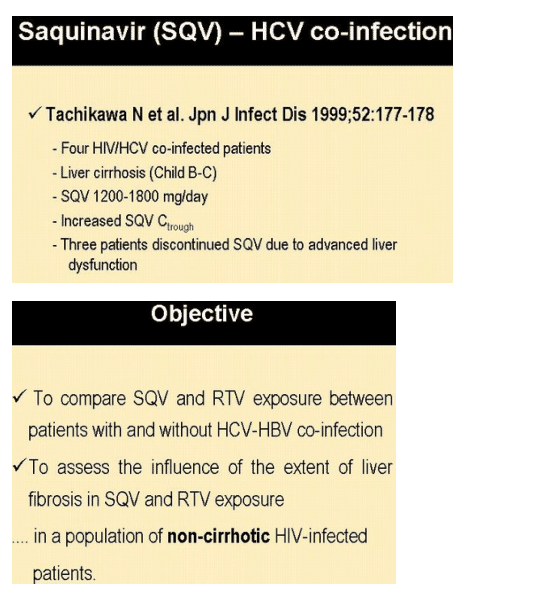
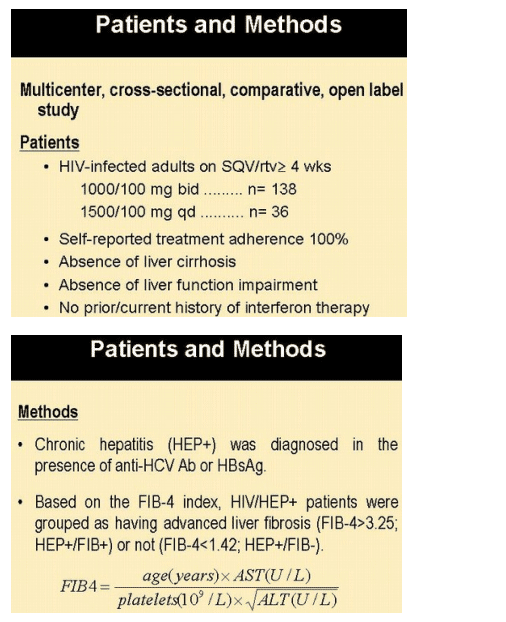
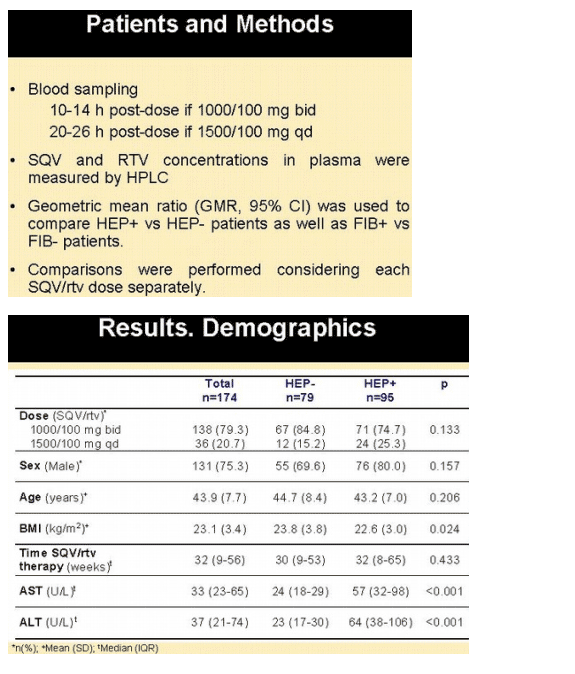
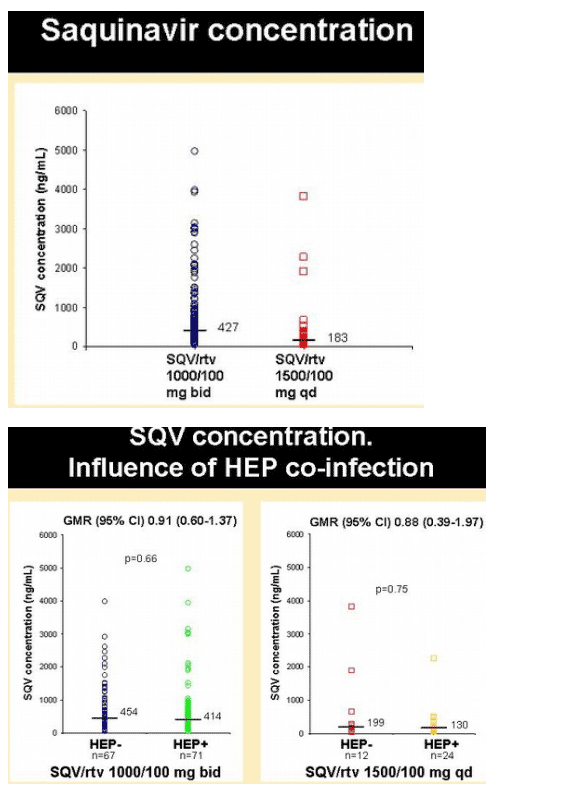
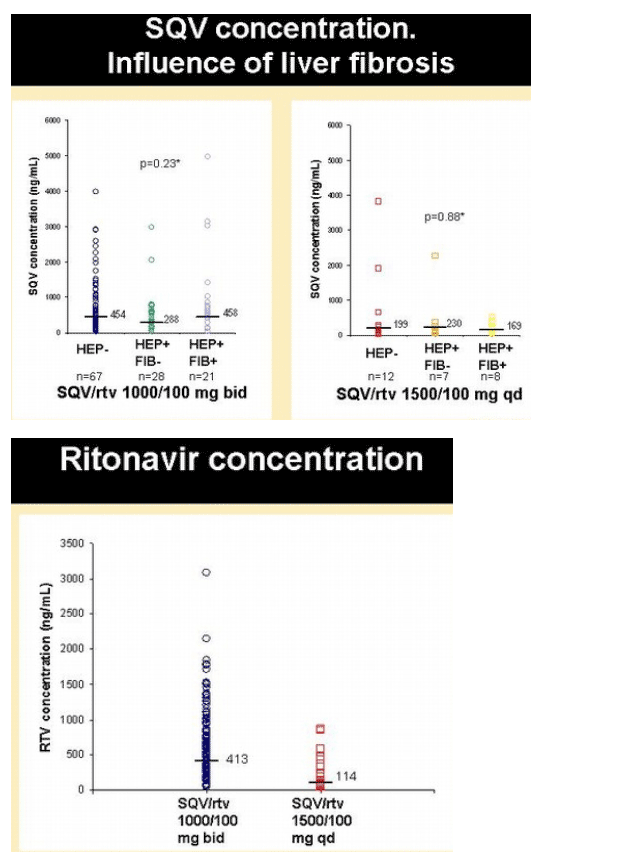
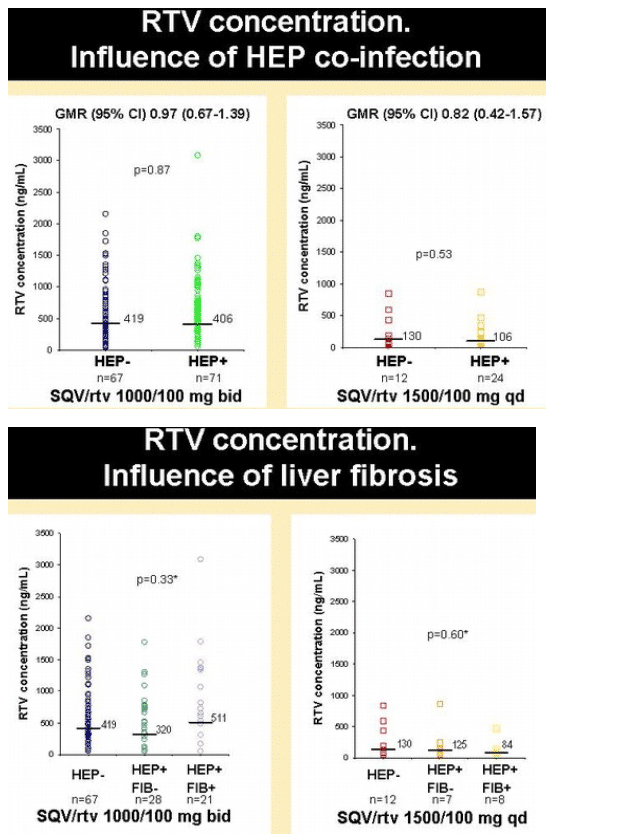
|
| |
|
 |
 |
|
|